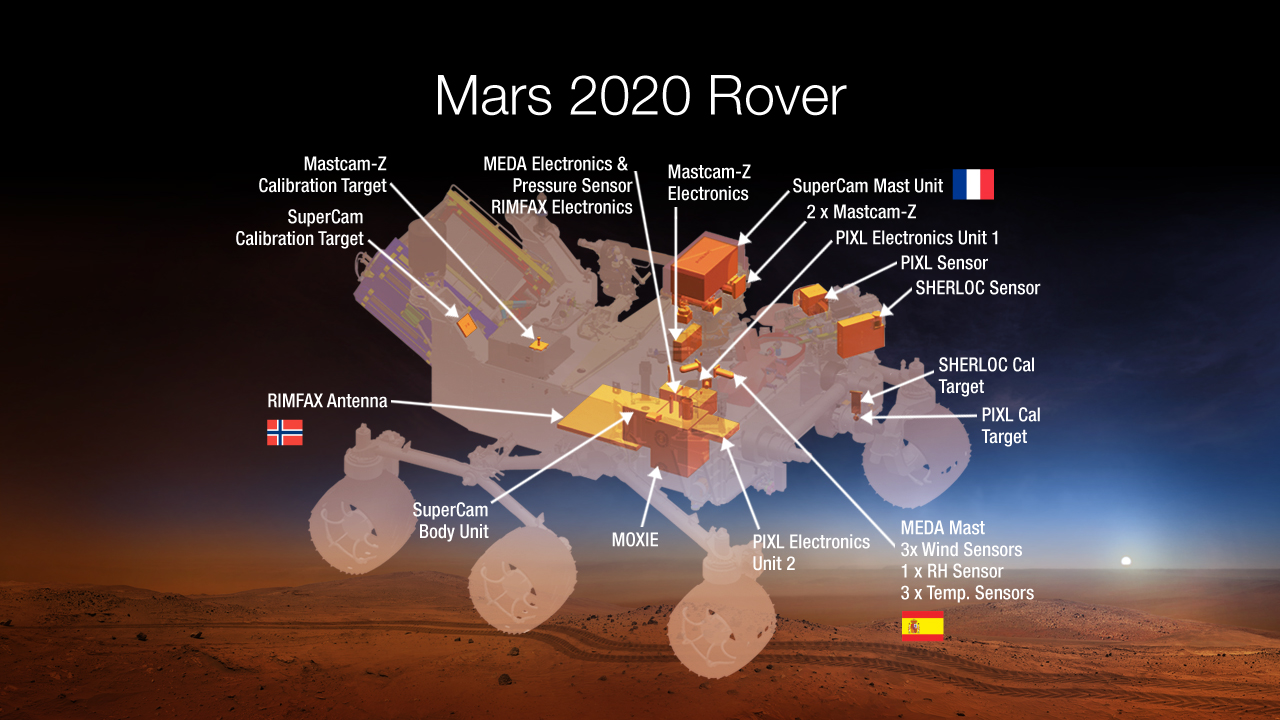NASA Eyes Potential Landing Sites for 2020 Mars Rover Mission

NASA is looking for a place to land its next car-size rover on Mars.
Expected to launch in 2020, the space agency asked scientists where they'd like to see the rover land on the Martian surface. Officials came away with more than 50 potential landing spots requested by the scientific community during a workshop held in May. Now, NASA officials working with the rover are going to start investigating those suggestions to see which will be the best fit for the spacecraft and its mission.
"I think we have 55-ish community proposals of [landing] sites," George Tahu, Mars 2020 rover program executive, said during a Planetary Science Subcommittee teleconference on Sept. 3. "We took the first crack at those. Nothing has been eliminated at this point. It's just the first cut at starting to look at them." [NASA's 2020 Mars Rover in Pictures]
There are some engineering constraints put on the landing site. For example, the target region can't be too rocky or high in altitude, so working within those parameters, scientists are trying to find the best spot on the planet for the 2020 rover to accomplish its scientific goals.
The rover is designed to seek out signs of past life on Mars, following up on the Curiosity rover's discovery that, Mars could have been habitable billions of years ago.
Signs of life
In order to search for possible signs of past life, the 2020 rover will drill into interesting rocks and cache them as samples, saving them for the day when the rocks can be sent back to Earth where scientists can examine them in person.
"[The] 2020 [Mars rover] has the overarching moniker of seeking the signs of life, so the focus of the science community is: Where would be the best place on Mars where evidence of life might have been preserved," Michael Meyer, NASA's lead scientist for the Mars program, said. "That kind of sets the overall tone."
Get the Space.com Newsletter
Breaking space news, the latest updates on rocket launches, skywatching events and more!
NASA will use imagery collected by probes orbiting the Red Planet to get more detailed information about potential landing sites before making a decision about where to land. NASA officials are hoping to land the new rover somewhere with many different kinds of rock types, allowing the rover to potentially cache a wide variety of rocks.
Scientists working on the project hope that the final landing site will be chosen two years before launch, Meyer told Space.com.

A Curiosity cousin
NASA's 2020 rover is also physically modeled after the agency's Curiosity rover, which touched down on the surface of Mars in 2012. The new rover will weigh about 1 ton and have six wheels, like Curiosity.
Scientists are even looking into landing the rover on a part of the planet marked as a possible landing spot for Curiosity before the Gale Crater was chosen partially because they have already been well studied for a possible landing. But that doesn't mean that any of those sites would be a perfect choice for the new mission.
"This mission, because it's seeking the signs of life and caching samples, it has a different objective than Curiosity had," Meyer said. "Therefore, even though the four landing sites that were in the running — including Gale — are very interesting and top-rated landing sites, they may not be top-rated for Mars 2020."
Some scientists are interested in going back to sites where spacecraft — like the twin Spirit and Opportunity rovers — have touched down before because they might be able to learn even more about a Martian region than they learned during the initial mission, Meyer said.
"Part of that is that we know more about the region, and now, [if] we send another rover that has a different set of instruments, there are a lot of questions that we can answer that weren't answered by the initial studies," Meyer said.
NASA will continue to hold workshops to narrow down the possible landing sites using new data as it is collected.
Follow Miriam Kramer @mirikramer and Google+. Follow us @Spacedotcom, Facebook and Google+. Original article on Space.com.
Join our Space Forums to keep talking space on the latest missions, night sky and more! And if you have a news tip, correction or comment, let us know at: community@space.com.

Miriam Kramer joined Space.com as a Staff Writer in December 2012. Since then, she has floated in weightlessness on a zero-gravity flight, felt the pull of 4-Gs in a trainer aircraft and watched rockets soar into space from Florida and Virginia. She also served as Space.com's lead space entertainment reporter, and enjoys all aspects of space news, astronomy and commercial spaceflight. Miriam has also presented space stories during live interviews with Fox News and other TV and radio outlets. She originally hails from Knoxville, Tennessee where she and her family would take trips to dark spots on the outskirts of town to watch meteor showers every year. She loves to travel and one day hopes to see the northern lights in person. Miriam is currently a space reporter with Axios, writing the Axios Space newsletter. You can follow Miriam on Twitter.









